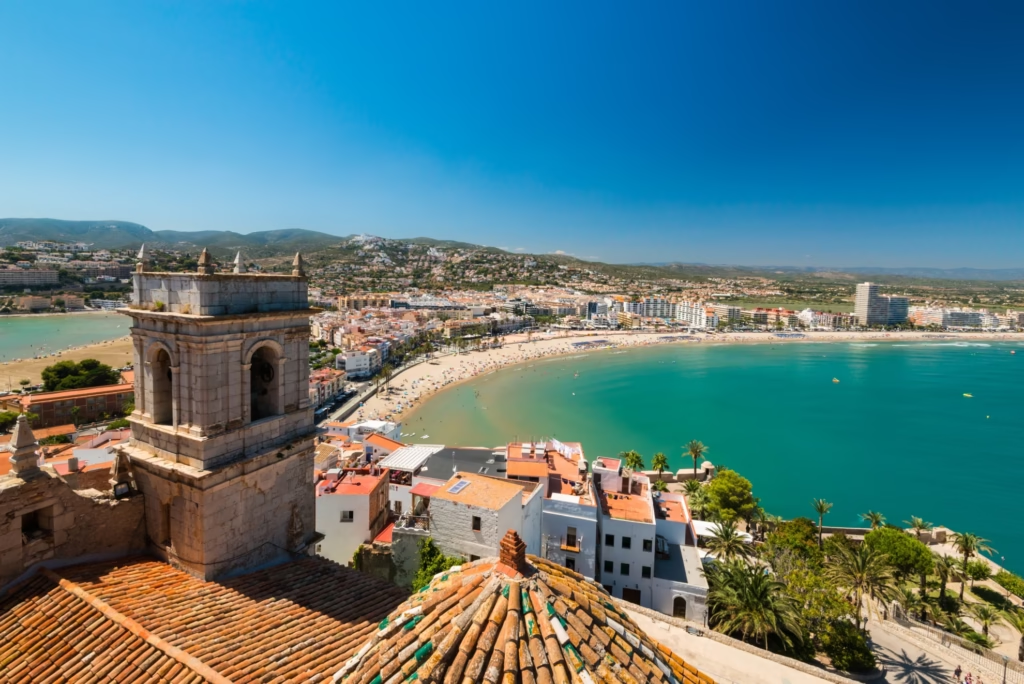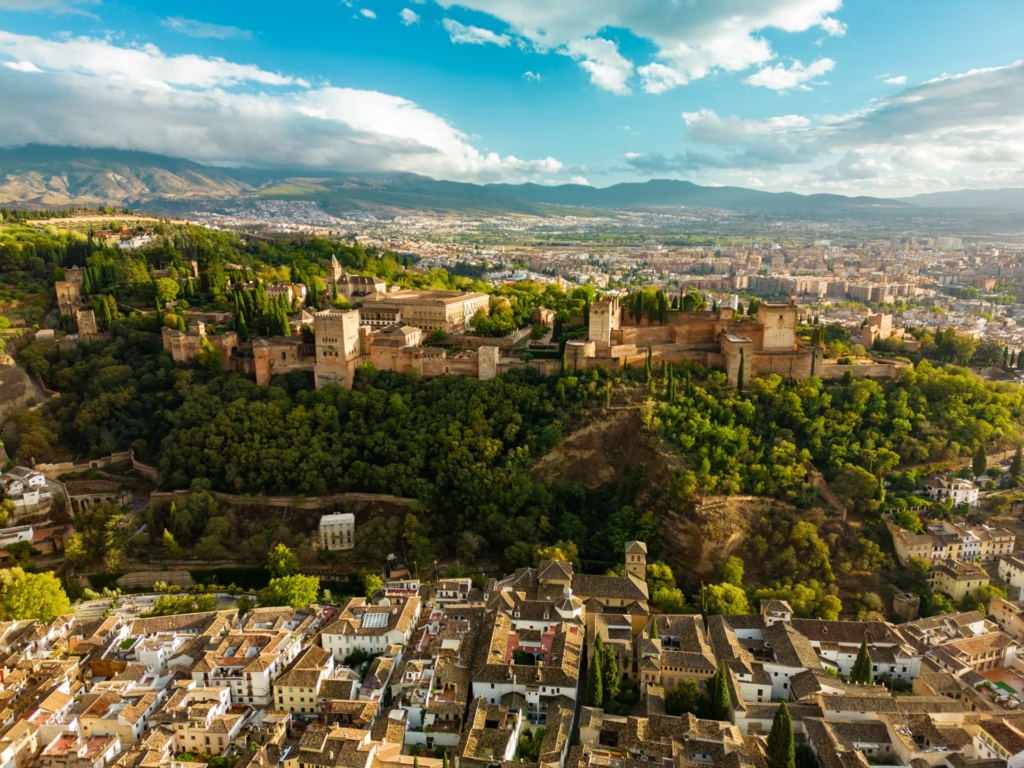Valencia, Spain’s third-largest city, is a captivating blend of rich history, stunning architecture, vibrant culture, and world-class cuisine. Whether you want to stroll along pristine beaches, explore ancient cathedrals, or experience the dynamic arts scene, Valencia offers a wide range of attractions for every traveler. This travel guide will help you uncover the best Valencia has to offer, from the famous City of Arts and Sciences to the delicious paella that originates from this charming Mediterranean destination.

Table of Contents
Why Visit Valencia?
Top Attractions in Valencia
Best Places to Eat in Valencia
Getting Around Valencia
Where to Stay in Valencia
Best Time to Visit Valencia
Valencia Travel Tips
FAQs About Valencia
Why Visit Valencia?
Valencia is a destination that perfectly blends modernity and tradition. Known for its Mediterranean climate, Valencia offers sunny days throughout the year, making it an ideal location for tourists. The city boasts a fascinating mix of Gothic, Baroque, and modern architecture that can be found in its charming old town, bustling plazas, and stunning landmarks.
In addition to its architectural wonders, Valencia is famous for its cultural events, including the annual Las Fallas festival. The city’s culinary scene, especially the traditional paella, makes Valencia a gastronomic paradise. The green spaces, such as the Turia Gardens, provide excellent opportunities for outdoor activities, while the nearby beaches are perfect for sunbathing and swimming.
Top Attractions in Valencia
1. City of Arts and Sciences (Ciudad de las Artes y las Ciencias)
The City of Arts and Sciences is Valencia’s iconic modern landmark, designed by architect Santiago Calatrava. This futuristic complex houses several unique structures, including the Oceanogràfic (Europe’s largest aquarium), the Hemisfèric, and the Príncipe Felipe Science Museum. Visitors can immerse themselves in science, technology, and marine life while marveling at the striking avant-garde architecture.
2. Valencia Cathedral and the Holy Grail
The Valencia Cathedral, also known as the Cathedral of Saint Mary, is located in the heart of the old town. It features Gothic, Baroque, and Renaissance architectural styles. The cathedral is home to the Holy Grail, believed by some to be the actual chalice used by Jesus during the Last Supper. Visitors can climb the Miguelete bell tower for breathtaking views of the city.
3. Turia Gardens (Jardín del Turia)
The Turia Gardens is an impressive green space that winds through the heart of Valencia. It was created in the former riverbed of the diverted Turia River. This park stretches for over nine kilometers and features bike lanes, sports facilities, and picnic spots. It is the perfect place for a leisurely stroll, a bike ride, or a family outing.
4. La Lonja de la Seda (Silk Exchange)
La Lonja de la Seda is a UNESCO World Heritage Site and a stunning example of Gothic architecture. Built in the 15th century, this building was used as a silk trading center and reflects Valencia’s prosperous history. Visitors will be captivated by the intricately carved columns and vaulted ceilings.
5. Malvarrosa Beach (Playa de la Malvarrosa)
Malvarrosa Beach is Valencia’s most popular urban beach. It offers a wide stretch of golden sand, a lively promenade, and various beach bars known as “chiringuitos.” This beach is ideal for relaxing in the sun, swimming, and enjoying fresh seafood by the sea.
Best Places to Eat in Valencia
1. Casa Carmela
Casa Carmela is a traditional restaurant known for serving some of the best paella in Valencia. This eatery has been preparing authentic wood-fired paellas since 1922. Located near Malvarrosa Beach, it provides a true taste of Valencia with stunning seaside views.
2. Central Market (Mercado Central)
The Central Market is one of the largest fresh food markets in Europe. Here, you can sample local delicacies, including cheeses, cured meats, and, of course, paella. The market’s architecture, featuring stained glass and ironwork, is as impressive as the food on offer.
3. Restaurante Navarro
Located in the city center, Restaurante Navarro is a great place to try traditional Valencian dishes. This family-owned restaurant specializes in rice dishes, including paella, and offers excellent service.
Getting Around Valencia
Public Transport
Valencia has an efficient public transportation system, including buses, trams, and a metro network. The Valencia Tourist Card is a great option for tourists, as it offers unlimited travel on public transport, along with discounts on various attractions.
Bike Rental
Valencia is a bike-friendly city, with numerous bike lanes and paths, particularly in the Turia Gardens. Renting a bike is an excellent way to explore the city’s landmarks while enjoying the pleasant Mediterranean weather.
Walking
Valencia’s historic center is pedestrian-friendly, and many of the main attractions are within walking distance. Exploring on foot allows you to enjoy the city’s vibrant streets, local shops, and charming squares.
Where to Stay in Valencia
1. Old Town (El Carmen)
El Carmen is Valencia’s historic center and offers numerous options for accommodations, from boutique hotels to charming guesthouses. Staying here provides easy access to Valencia’s key attractions, such as the cathedral, Central Market, and La Lonja de la Seda.
2. Ruzafa
Ruzafa is a trendy neighborhood known for its lively atmosphere, bustling cafes, and diverse nightlife. It is ideal for those looking for a vibrant local experience, with many boutique hotels and Airbnb options.
3. Malvarrosa Beach
If you prefer to stay by the coast, Malvarrosa Beach offers a selection of hotels with stunning sea views. This area is ideal for travelers who want to relax by the beach and enjoy fresh seafood.
Best Time to Visit Valencia
Valencia enjoys a Mediterranean climate, which means mild winters and hot summers. The best time to visit is in the spring (March to May) or fall (September to November), when the weather is pleasant and the city is not overly crowded. March is particularly exciting because of the Las Fallas Festival, a world-famous event featuring parades, fireworks, and intricate sculptures.
Valencia Travel Tips
Try Authentic Paella: Valencia is the birthplace of paella, so be sure to try the authentic dish made with rabbit, chicken, and local beans. Avoid touristy restaurants that serve paella throughout the day, as true Valencian paella is typically served during lunchtime.
Stay Hydrated: Valencia’s hot climate means staying hydrated is important, especially if you’re exploring during the summer.
Book in Advance for Las Fallas: If you plan to visit Valencia during Las Fallas, be sure to book your accommodation well in advance, as the city gets very crowded during this popular festival.
FAQs About Valencia
1. What is Valencia best known for?
Valencia is best known for its City of Arts and Sciences, paella, and the Las Fallas Festival. The city is also famous for its historic architecture, stunning beaches, and vibrant nightlife.
2. How many days do you need to visit Valencia?
To see the main attractions of Valencia, three to four days is ideal. This allows enough time to explore the old town, visit the City of Arts and Sciences, enjoy the beaches, and try local cuisine.
3. Is Valencia a walkable city?
Yes, Valencia is a very walkable city, especially in the historic center. Many of the key attractions are within walking distance, making it easy to explore on foot.
4. What is the best way to get to Valencia?
Valencia is well connected by air, rail, and road. The Valencia Airport (VLC) offers international and domestic flights. The city is also accessible by high-speed train (AVE) from major Spanish cities like Madrid and Barcelona.
5. What food is Valencia famous for?
Valencia is famous for paella, which originated in the region. Other notable dishes include fideuà (a noodle-based dish similar to paella) and horchata, a refreshing drink made from tiger nuts.
6. Is Valencia safe for tourists?
Yes, Valencia is considered a safe city for tourists. Like any large city, it’s advisable to stay vigilant, especially in crowded areas and at night, but overall Valencia has a low crime rate
Conclusion
Valencia is a diverse city that offers something for every type of traveler—whether you’re an architecture enthusiast, a foodie, or a beach lover. With its beautiful landmarks, rich history, and welcoming culture, Valencia should be at the top of your travel list when visiting Spain. Enjoy the Mediterranean sunshine, explore historic gems, and indulge in delicious cuisine for an unforgettable experience.

